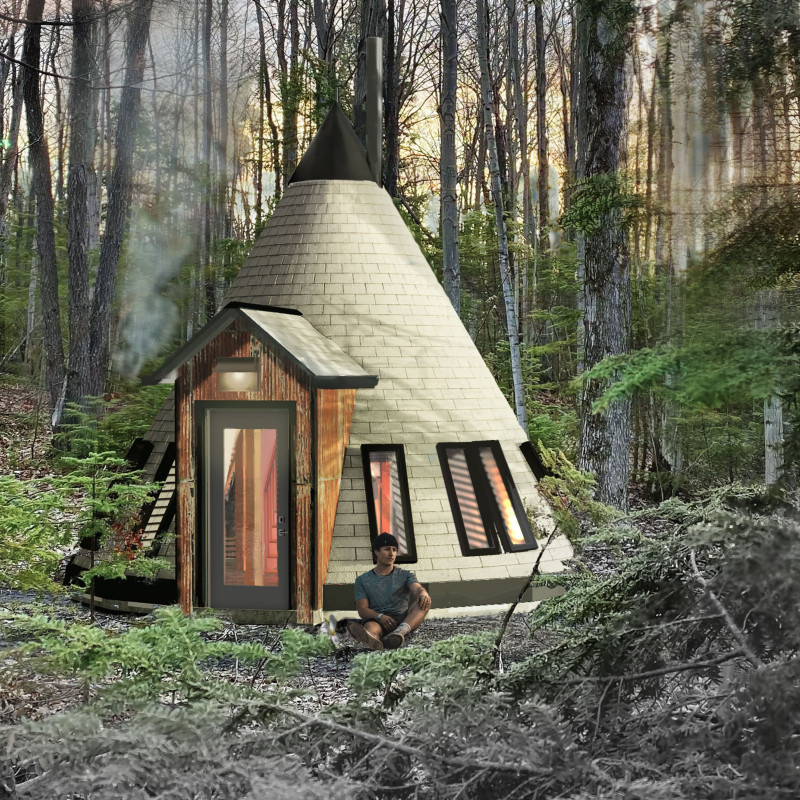5 key facts about this project
The design centers around creating an immersive experience that fosters a connection between occupants and the environment. The choice of materials like reclaimed wood, cedar shingles, and glass is intentional, promoting environmental sustainability and ensuring durability. The incorporation of large windows allows natural light to penetrate the interior, enhancing the user experience while also minimizing reliance on artificial lighting.
Sustainable Design and Material Selection
One of the distinct features of this project is its commitment to sustainable architecture. The use of reclaimed wood not only provides structural strength but also limits new material consumption, reflecting a responsible approach to resource usage. Additionally, cedar shingles on the roof improve thermal insulation and offer a natural aesthetic that resonates with the surrounding landscape. The structure's design takes advantage of passive solar heating and cooling strategies, reducing overall energy use.
The layout of the interior prioritizes flexibility and function. Spatial zoning separates communal areas from private spaces, enabling diverse activities to take place without disturbing other occupants. The wood-burning stove serves both as a focal point and a practical heating solution, reinforcing the design's integration with natural elements.
Unique Structural Characteristics
The architectural structure employs a conical shape that is not merely aesthetic but also highly functional. The pitch of the roof facilitates efficient snow shedding in colder climates, while the raised foundation protects against moisture. This approach to the foundation design enhances safety and comfort for occupants.
In contrast to typical park structures, the project's commitment to cultural representation sets it apart. By embracing the visual and historical significance of the tipi, the design encourages dialogue about indigenous narratives and promotes a sense of identity within a modern urban context.
Engagement with Nature
The orientation of the structure is strategically chosen to enhance views of the park landscape while creating a seamless transition between indoor and outdoor spaces. The large, carefully positioned windows evoke a sense of openness, encouraging interaction with the natural surroundings. This thoughtful design choice supports the overarching goal of fostering community engagement and an appreciation of nature.
This architectural project serves as a contemporary reinterpretation of a traditional form, illustrating how architecture can engage with cultural histories while addressing modern sustainability goals. For further details into the architectural plans, sections, designs, and innovative ideas incorporated into this project, we invite you to explore its presentation more closely.























